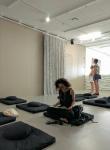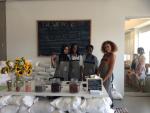Experience and Identity
By dorothy kimSeptember 4, 2016 - 14:25

There are various connections between people that bring together shared experiences; whether they may be seemingly insignificant occurrences or meaningful times, they create conversations that grow. The factors connecting people may include static descriptions of the self: race, gender, class. Of course, experiences and emotions can also bring together others from various paths and yet, these very experiences are also the factors that divide such similarities people believed they had with others. Jordan demonstrates the sharp differences that arise from disconnections through her own experience with people.











